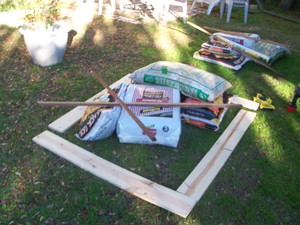Once you find a paint brush that does not shed and fits your hand comfortably, it becomes part of the family. You need to pamper that brush to keep it in good shape and readily usable at all times. So treat it like a person! Think of its needs and then find the best way to meet them. Some tips for proper paint brush storage are cleaning, cleaning again, and positioning.
Unless you throw away your paint brush as soon as you have finished the job, you have probably had the experience of washing a paint brush. Do you swish it around in a sink with running water? Do you use cold or warm water? Do you use soap? There are many ways to do this, but the best is to use warm water, soap, and (I kid you not) a fork and a scrub brush. You need to use the soap and warm water for a few minutes, in order to truly penetrate the bristles and start breaking down the paint that has built up in there. Then, use the fork to help breaking it down. Use the fork like a comb. In fact, if you have a comb you don’t mind ruining, use it. Then trade off and use the scrubber to get the paint that has dried on the outside of the brush off. With diligence, five minutes, and plenty of soap and water, you can get just about any brush clean.
Now, what if you used lacquer or some other oil-based paint? You will need to use paint thinner to clean that brush. In this case, it is best to put some thinner in something like a coffee can and enthusiastically swish the brush in it. Do this at least twice, and you can use a fork, comb or scrubber to help the work along. I recommend you wear rubber gloves while doing this. When the paint thinner has done its job, you can then do what I described in the preceding paragraph. Warm water and soap will get residual thinner off that brush.
Now for the kicker. Get some regular conditioner, you know, the stuff you use on your hair. Hey, if you have a good brush, it is made of hair, so this actually works. Condition the bristles of your brush in order to soften them, then rinse really well.
As a final step in cleaning, I like to shake my brushes violently to get as much water out as I can. Then I grab a paper towel or a clean rag and squeeze and bend the bristles to get them flexible and get the rest of the water out.
After the cleaning, you merely have to store your brushes in the right position. Many of us have stored brushes in cans or jars, bristles down. We know what happens, the bristles come out bent and damaged. Some of us like to store brushes in a can or jar with the handle down. This makes gravity pull the bristles out and done, so we end up with our bristles looking like a cat that just came out of the dryer.
The best way to store a brush is hanging with the bristles down. So get some hooks in your shed, or just pound a few nails in, and hang them that way. If your brush has no hole in the handle, simple! Just drill a hole in the handle.
And here’s where my compulsiveness enters. I like to wrap a paper towel around the bristles, fairly tightly to keep them close together. I actually tape the towel there so it doesn’t come off. Then I slide a small, ziplock sandwich bag over the towel covered bristles and close it enough so it stays on. This may be overkill, but my brushes last years.
I have seen another way of storing brushes that works well if you have a nice, large flat surface. Lay a cloth towel or large rag down and put your brushes in there, folding the towel over. It looks like a paint brush taco that is laying on its side. This works for my neighbor, but he has more space than me.
In conclusion, remember to make that good paintbrush part of the family and take good care of it!




